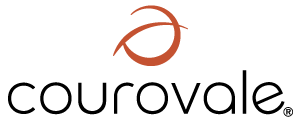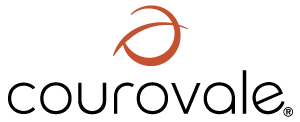Changes in the cattle’s diet can transform the carbon footprint of leather, improving the sustainability of the product while respecting environmental standards.
The leather industry, often seen only as a by-product of the meat industry, faces criticism because of its association with the environmental impact of livestock farming. This connection is influenced by cattle feeding methods, particularly the intensive use of soy, which raises concerns about deforestation and the use of pesticides.
However, a change in cattle feeding practices is showing the potential to modify this narrative. Thus presenting an opportunity for the leather industry to improve its sustainability credentials. Keep reading to find out how these changes are setting a new standard for the sustainable future of leather.
Cattle Feeding: The Connection Between Soy and Leather Sustainability
The way we feed our livestock has profound implications for animal health, the global environment and the perceived sustainability of leather. Soy, traditionally used as the main feed for cattle, is a focus of environmental controversy due to its role in deforestation and the intensive use of pesticides in its production. These cultivation practices not only directly affect the ecosystem, but also have repercussions on the image of leather, which is seen as a direct by-product of this production chain.
The challenge here lies in the double impact. Firstly, deforestation is needed to expand land for soy cultivation. After all, it is often cited as a threat to biodiversity and a contributor to climate change.
Secondly, the use of pesticides in soybean farming, can contaminate waterways and soils, affecting wildlife and local ecosystems. Both aspects raise ethical and environmental issues that can affect the perception of leather as a sustainable material.
The leather industry, aware of these concerns, has an important role to play. By looking for alternative, more sustainable methods of feeding livestock, the industry can help reduce leather’s carbon footprint and improve its image as an ecologically responsible product. This connection between soy and leather sustainability highlights the urgent need for innovation and change in the way we produce our basic inputs. Thus, seeking to align agricultural practices with the sustainability values that consumers demand and the planet needs.
Reducing the Carbon Footprint: New Diets for Cattle
Innovative alternatives to soy-based feed are emerging as promising solutions for reducing the carbon footprint of livestock farming. Options such as insects, algae and other eco-friendly proteins are reducing dependence on crops such as soy, known for their high environmental impact. What’s more, these alternatives help to reduce emissions of methane, one of the most potent greenhouse gases.
Diversification in cattle diets not only offers improvements in terms of environmental sustainability but also benefits animal health. This establishes a production cycle that is more harmonious with the environment. According to a study featured on the Planet of Plenty website, the introduction of food sources such as insects, seaweed, microalgae, pea protein and single-cell protein gives farmers the opportunity to boost their production in a sustainable way.
These alternative feed sources are particularly effective in reducing methane production by cattle. This is vital, considering that methane has an impact on global warming, despite its shorter lifespan in the atmosphere compared to CO2. Insects, for example, are emerging as a protein-rich source with a relatively low carbon footprint. Meanwhile, algae, both marine and microalgae, are being studied for their ability to substantially reduce methane emissions from animals.
To explore more about these food innovations and their positive impact on both livestock farming and the environment, you can consult the full article at Planet of Plenty.
PEFCR and the Environmental Assessment of Leather
The sustainability of leather is comprehensively assessed by the Product Environmental Footprint Category Rules (PEFCR), an initiative involving leather manufacturers, national governments and the European Commission. This set of guidelines seeks to accurately and objectively quantify the environmental impact of leather, from the farm to the point of sale.
The PEFCR takes into account various aspects of leather production, including the environmental impact of livestock farming. Especially relevant is the emission of greenhouse gases, such as methane, during the livestock farming phase. As well as the effects of land and water use and waste treatment. This holistic assessment allows the leather industry not only to better understand its current practices, but also to identify key areas for sustainable improvement.
Importantly, while PEFCR provides a metric for the carbon footprint, the system also recognizes the unique properties of leather, such as its biodegradability and longevity, which often surpass those of alternative materials. Many alternatives to leather, which include synthetic compounds, don’t offer the same durability and can end up contributing more to landfill waste.
Therefore, by evaluating leather through the lens of PEFCR, we measure its environmental impact and reinforce the sector’s commitment to good production practices.
Commitment to Sustainability in Leather Production
Integrating sustainable practices is essential for the leather industry to minimize its environmental impact. The adoption of new cattle feeding techniques and the continuous improvement of tanning processes allows the industry to produce leather that meets quality requirements and respects the principles of environmental sustainability.
Innovation in cattle feeding methods, such as the inclusion of insect- and algae-based alternatives, demonstrates the potential to reduce methane emissions. In addition, advances in tanning processes, such as the reduced use of chemicals and increased water recycling, reflect a commitment to reducing the industry’s carbon footprint.
Recognizing the demands of the global market and the standards of conscious consumption, Courovale remains committed to implementing practices that guarantee the sustainability and quality of its products. This approach not only strengthens its position in the market but also responds to growing demands for environmental responsibility.
Explore Courovale’s innovations and discover how we are shaping the future of leather production with responsibility and innovation. We invite you to learn more about our sustainable practices and join us on the journey towards a greener future. Visit our website and find out more.





Comments are closed.